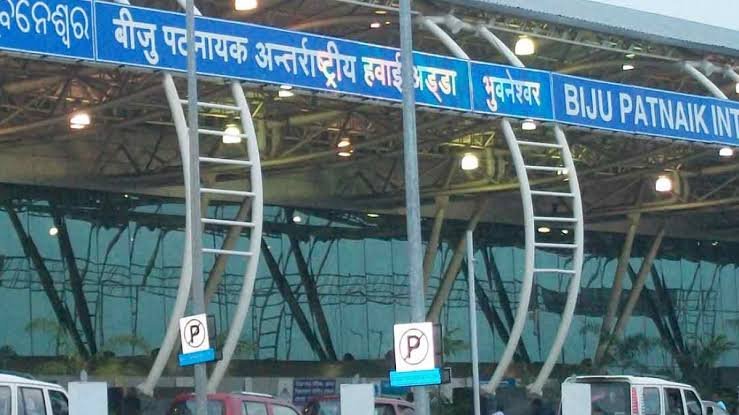Travel Guides & Articles
India’s travel distribution platform TBO to acquire US-based Classic Vacations from the Najafi Companies

Gurugram-based TBO said it will acquire US-based Classic Vacations from Phoenix-based investment firm, The Najafi Companies, for an estimated total purchase of up to $125 million.
Classic Vacations was acquired by The Najafi Companies in 2021 from Expedia Group.
The Indian company said the acquisition combines its technology platform and global inventory with Classic Vacations’ extensive network of luxury travel advisors and suppliers. Classic Vacations reported revenue of $111 million and operating EBITDA of $11.2 million for the fiscal year ended Dec. 31, 2024.
TBO’s expansion into serving the premium outbound travel market aligns strategically with Classic Vacation’s exclusive B2B brand and elite, high-value advisor network enhanced by its nearly five decades of success and brand recognition.
Founded in 2006, TBO is a global travel distribution platform that aims to simplify the buying and selling travel needs of travel partners across the world. It leverages technology to simplify the demands of the complex world of global travel by connecting over 159,000 travel buyers and 1 million travel suppliers at scale of more than 100 countries.
“We’re thrilled to bring Classic Vacations into the TBO family – the company’s longstanding delivery of outstanding services has earned the trust of its more than 10,000 travel advisors in the U.S., and their end customers, making them a seamless fit for our vision moving forward in the fast-evolving travel and tourism industry,” said Gaurav Bhatnagar, TBO’s cofounder and Jt. Managing Director. “Classic Vacations is led by a strong team of experts and will continue as an independent brand while leveraging TBO’s technology and distribution capabilities to grow their business.”
“This acquisition continues to further our strategy to invest in both organic and inorganic growth opportunities. As we start working on integrating Classic Vacations with TBO, we will remain open to similar strategic alliances going forward,” said Ankush Nijhawan, cofounder and Jt. Managing Director of TBO.”
“We’re excited for this next phase in our company’s journey – TBO’s tech-centric solutions are geared fully toward our travel advisor community,” said Melissa Krueger, CEO of Classic Vacations. “TBO connects us to its first-class technology platform unlike what the wholesale market has ever had access to – allowing us to bring even more resources, tools and insider connections to our valued travel advisors.”
“Together, we’re strengthening Classic Vacations’ position as the premier luxury partner in the market while extending our reach onto the global stage, reflecting the worldwide footprint of our most important customers and supplier partners,” Krueger added.
“This acquisition and partnership is a natural next step for our portfolio company Classic Vacations, and we’re happy to have worked successfully with them for the last four years, maximising the company’s strengths and expertise in luxury travel. With a proven track record of delivering value to partners and travelers alike, Classic is uniquely positioned to lead the industry forward, building on its legacy of performance for years to come,” said Jahm Najafi, founder and CEO of The Najafi Companies.
Moelis & Company LLC acted as exclusive financial adviser and Ballard Spahr LLP acted as legal advisor to Classic Vacations in this transaction. Cooley LLP served as the legal advisors and PWC were the financial and tax advisors for TBO.
Travel Guides & Articles
Ranchi Airport eyes growth with new connectivity plans

Ranchi’s Birsa Munda Airport is set to witness more flight operations soon, with a new transit service to Bhubaneswar already launched. According to airport director R. R. Mourya, four additional routes are currently under consideration, highlighting the airport’s aim to strengthen air connectivity across the region.
Currently, only two airlines operate flights from Ranchi, but there are expectations of increased activity in the upcoming winter schedule. Although exact destinations are yet to be confirmed, Mourya revealed that Akasa Air had earlier shown interest in Ranchi operations, though the plan did not materialise.
The airport’s strong performance in passenger satisfaction has been another milestone. Rising from the 34th position last year to fifth place in the Airports Authority of India’s survey, the achievement reflects improved infrastructure and services. Mourya credited the efforts to enhance facilities, ensuring travelers have a more comfortable waiting experience.
Several infrastructural upgrades have been completed recently, including 300 square meters of new seating space and an additional lounge that was inaugurated last year. Food services have been expanded, and restroom renovations are already 70% finished. A dedicated parking zone for commercial vehicles has also been introduced.
Despite the optimism, Ranchi’s flight operations have temporarily decreased from 27 to 24. This drop is due to the reorientation and rescheduling of certain services. For instance, one route was shifted to Deoghar, while a Ranchi-Patna direct flight was restructured via Kolkata. However, Mourya assured that passenger convenience from Jharkhand remains unaffected.
Looking ahead, authorities plan to further upgrade passenger amenities within the next six to twelve months. With the addition of more airlines and continued infrastructure development, Ranchi’s Birsa Munda Airport is positioning itself as a rising hub in eastern India’s aviation network.
Travel Guides & Articles
The costliest chai in India: How credit cards sell you the lounge dream – Money Insights News

I open Twitter on travel days and see the same posts.
A tray of snacks, a cup of chai, soft chairs in the background, and a caption that says free lounge access with my card. Many people post it and celebrate it. I felt the same when I held multiple cards. Lounge entry felt like a small upgrade, so I told friends to get the same perk.
Then I started reading my statements line by line.
Annual fees after the first year. Spend targets to waive fees. Caps on visits that run out, too. Foreign currency markups on every swipe abroad. Reward values that shift without notice.
That is when I surrendered all my credit cards. I wrote about that decision here: I paid my bills on time and never paid interest. Here is why I quit credit cards anyway.
Since then I look at the lounge photo differently. The chai feels free in the moment, yet the bill often sits elsewhere. It sits in the annual fee. It sits in the spend you do only to keep a waiver. It sits in the forex markup that can exceed the value of the food on your plate. Miss one payment, and the interest can turn that visit into the costliest snack of the year.
This piece is a simple breakdown of that math. Before the next lounge selfie, it helps to ask one question. What did I truly pay for this plate and this chair.
The Annual Fee And The Spend Target
Let us start with the simplest cost. The fee.
When I held multiple cards, the first year felt easy. Free welcome, free visits, free chai. The second year was the turn. Renewal hit. I told myself the lounge perk made it worth it. Then I did the math.
A fee is not a line on a brochure. It is money out of your pocket. If a card costs a few thousand rupees and you visit a lounge three or four times in a year, you have already paid a high price per visit before you even sit down.
Many cards add a condition on top. Spend a large amount in the year and the fee will be waived. That sentence sounds harmless. In real life it changes behaviour.
Think about how people chase that target. I did it too. You bring forward purchases. You choose the card even when UPI or a debit card would have been cleaner. You add an extra order to a sale because the counter is close. You pay a bill early only to push the number up. None of these choices feel wrong in the moment. Together they create spend you would not have done at the same pace. The waiver feels like a win. The extra spend is the real payment.
Caps are the next surprise. Complimentary access is rarely open ended. There are quarterly limits or annual buckets. If your travel is lumpy, you can hit the cap in a single busy month. The next visit is billed. Add-on cards often draw from the same bucket, so a family of four can use up the allowance without noticing. The benefit that looked rich at sign-up becomes thin when you actually need it.
Here is a simple check you should use.
Ask yourself three questions.
- If the card had no lounge access, would I still pay this renewal fee.
- If the only reason I am swiping today is to hit a waiver, would I buy this item otherwise, at this time, at this price.
- If I expect two or three lounge visits in the year, would a direct paid entry on those days cost less than the fee.
Answering honestly is uncomfortable. It was for me. I realised I was paying for a feeling of access rather than a service I used often. That is why I surrendered my cards. If you fly every week, the math can favour a premium card. If you fly a few times a year, the fee and the target can turn a cup of lounge chai into an expensive habit.
In short, the bill for the lounge rarely shows up at the lounge. It hides in renewals, in targets that push spending, and in limits that reduce real use. Once you see that clearly, the next section becomes important. The foreign currency markup that attaches itself to every trip abroad.
The Foreign Currency Markup That Follows You Abroad
Think of a normal trip. You glide into the lounge, click a photo, sip chai, and board. The real bill starts after you land. Every coffee, taxi, museum ticket, and hotel swipe overseas carries a small extra line on your card. That line is the foreign currency markup.
Most Indian credit cards charge about 2 to 3.5 percent on every foreign transaction. Then GST gets added on that fee. The brochure writes it as a neat percentage. On a real trip it feels different.
I noticed this when I still had cards. One family trip. Roughly ₹1,20,000 spent abroad. My statement showed two extra lines I had ignored for years:
- International Markup Fee
- IGST on International Markup
At a 3.5 percent markup, that was ₹4,200. Add 18 percent GST on that fee, about ₹756 more. Total ₹4,956. No one at a counter asked me to pay it. It just appeared on the bill later. That single trip’s markup could have paid for a few lounge entries outright.
Where it adds up
- Every swipe overseas. Cafes, taxis, pharmacies, attractions.
- Online buys in foreign currency. Software, courses, subscriptions, hotel portals that bill in USD or EUR.
- Hotel deposits and car rentals. Pre-authorisations get added and released later. Rate changes in between can create small losses.
- Dynamic currency conversion. The terminal asks, “Pay in INR or pay in local currency.” Choose local currency. INR at the machine often bakes in a poor rate on top of the bank markup.
Run your own “trip test”
- Add up last trip’s foreign spends.
- Multiply by your card’s forex rate.
- Add 18 percent GST on that fee.
- Compare this number with what you actually ate and drank in lounges on that trip.
If the markup plus GST is bigger than your lounge consumption, then the lounge was not free. You paid for it through the markup.
Why this matters for lounge lovers
Many people keep a premium card mainly for international lounge access. The same card then collects 3 percent to 3.5 percent on almost every spend during the trip. If a family spends ₹1,50,000 abroad, a 3.5 percent markup plus GST is roughly ₹6,195. That is real money for a silent line item.
What about zero-forex cards
Some cards advertise zero forex markup. Read the conditions. Often there is a higher annual fee, a cap, or narrow categories. If you travel very often, a clean zero-forex product can work. If you take one or two trips a year, the fee can wipe out the benefit.
Small habits that save a lot
- Always choose to pay in the local currency on the terminal.
- Avoid cash withdrawals on credit cards overseas. Cash advance fees and interest start from day one.
- For online purchases, check the billing currency before you click pay.
- Keep one card for domestic use and one for foreign spends so you can track markups easily.
When I finally laid my statements side by side, the picture was clear. The lounge photo felt free. The markup paid the bill. This was one more reason I surrendered my cards. Next, let us talk about the slow leak that many people miss at home. Rewards that change value and give you less for the same fee.
Before You Renew: A Simple Audit That Works
One note before we wrap. I do not use credit cards now. I surrendered them. Still, I suggest this audit to anyone who cares about value. It is quick, honest, and helps you decide if lounge access is worth it for you.
The five-minute audit
- Count your lounge visits: Last twelve months only.
- Write the annual fee: For each card that promised lounge access.
- Per-visit cost: Fee divided by actual visits.
- Add the forex leak: On your last foreign trip, multiply total overseas spend by your card’s forex rate, then add 18 percent GST on that fee.
- Reality check: Is per-visit cost plus forex leak higher than what you actually ate or drank in lounges. If yes, the lounge is not free.
Small rules that save real money
- Do not chase fee waivers: If you are buying only to hit a target, count that extra spend as a cost.
- Track the cap: Quarterly or yearly limits apply. Add-on cards share the same pool.
- Kill markup at the counter: Always pay in local currency overseas. Avoid cash withdrawals on credit cards.
- Right tool for the job: Keep one simple card for daily use. Use a separate travel card only when you travel.
- Auto-pay in full: One late fee can wipe out a year of perks.
- Downgrade fast: If your fee per visit is high, ask for a waiver or move to a lower-fee product.
- Buy access when needed: If you expect two or three visits a year, paid entry on those days may cost less than a premium fee all year.
Disclaimer
Note: This article relies on data from fund reports, index history, and public disclosures. We have used our own assumptions for analysis and illustrations.
The purpose of this article is to share insights, data points, and thought-provoking perspectives on investing. It is not investment advice. If you wish to act on any investment idea, you are strongly advised to consult a qualified advisor. This article is strictly for educational purposes. The views expressed are personal and do not reflect those of my current or past employers.
Parth Parikh has over a decade of experience in finance and research. He currently heads growth and content strategy at Finsire, where he works on investor education initiatives and products like Loan Against Mutual Funds (LAMF) and financial data solutions for banks and fintechs.
Travel Guides & Articles
IRCTC to lead India’s participation at International Tourism Expo Vietnam 2025 with ASEAN-India Pavilion

NEW DELHI: The Indian Railway Catering and Tourism Corporation (IRCTC), a Government of India enterprise, has been entrusted with the responsibility of organising India’s participation in the prestigious International Tourism Expo (ITE) Vietnam 2025.
This comes after Prime Minister Narendra Modi announced 2025 as the ASEAN-India Year of Tourism, marking a renewed commitment by India to strengthen its cultural, economic, and tourism ties with ASEAN countries.
This expo is being organised from 4 to 6 September this year at the Saigon Exhibition and Convention Centre (SECC) in Ho Chi Minh City, Vietnam.
The Prime Minister’s bold proclamation essentially outlines the pivotal role of tourism in improving people-to-people connectivity, fostering mutual prosperity, and strengthening the bonds of friendship between India and the ASEAN countries.
According to an official source, IRCTC is setting up an exclusive ASEAN-India Pavilion that will showcase a diverse range of tourism offerings from India. These include the country’s rich cultural heritage, spiritual and wellness packages, natural beauty, adventure activities, and premium travel products such as the world-class IRCTC luxury trains: the Maharajas’ Express, the Golden Chariot, and the Buddhist Circuit luxury AC train.
Vipra Pandey, Consulate General of India, inaugurated the ASEAN-India Pavilion in Ho Chi Minh City.
-

 Business1 week ago
Business1 week agoThe Guardian view on Trump and the Fed: independence is no substitute for accountability | Editorial
-
Tools & Platforms4 weeks ago
Building Trust in Military AI Starts with Opening the Black Box – War on the Rocks
-

 Ethics & Policy1 month ago
Ethics & Policy1 month agoSDAIA Supports Saudi Arabia’s Leadership in Shaping Global AI Ethics, Policy, and Research – وكالة الأنباء السعودية
-

 Events & Conferences4 months ago
Events & Conferences4 months agoJourney to 1000 models: Scaling Instagram’s recommendation system
-

 Jobs & Careers2 months ago
Jobs & Careers2 months agoMumbai-based Perplexity Alternative Has 60k+ Users Without Funding
-

 Education2 months ago
Education2 months agoVEX Robotics launches AI-powered classroom robotics system
-

 Podcasts & Talks2 months ago
Podcasts & Talks2 months agoHappy 4th of July! 🎆 Made with Veo 3 in Gemini
-

 Education2 months ago
Education2 months agoMacron says UK and France have duty to tackle illegal migration ‘with humanity, solidarity and firmness’ – UK politics live | Politics
-

 Funding & Business2 months ago
Funding & Business2 months agoKayak and Expedia race to build AI travel agents that turn social posts into itineraries
-

 Podcasts & Talks2 months ago
Podcasts & Talks2 months agoOpenAI 🤝 @teamganassi









